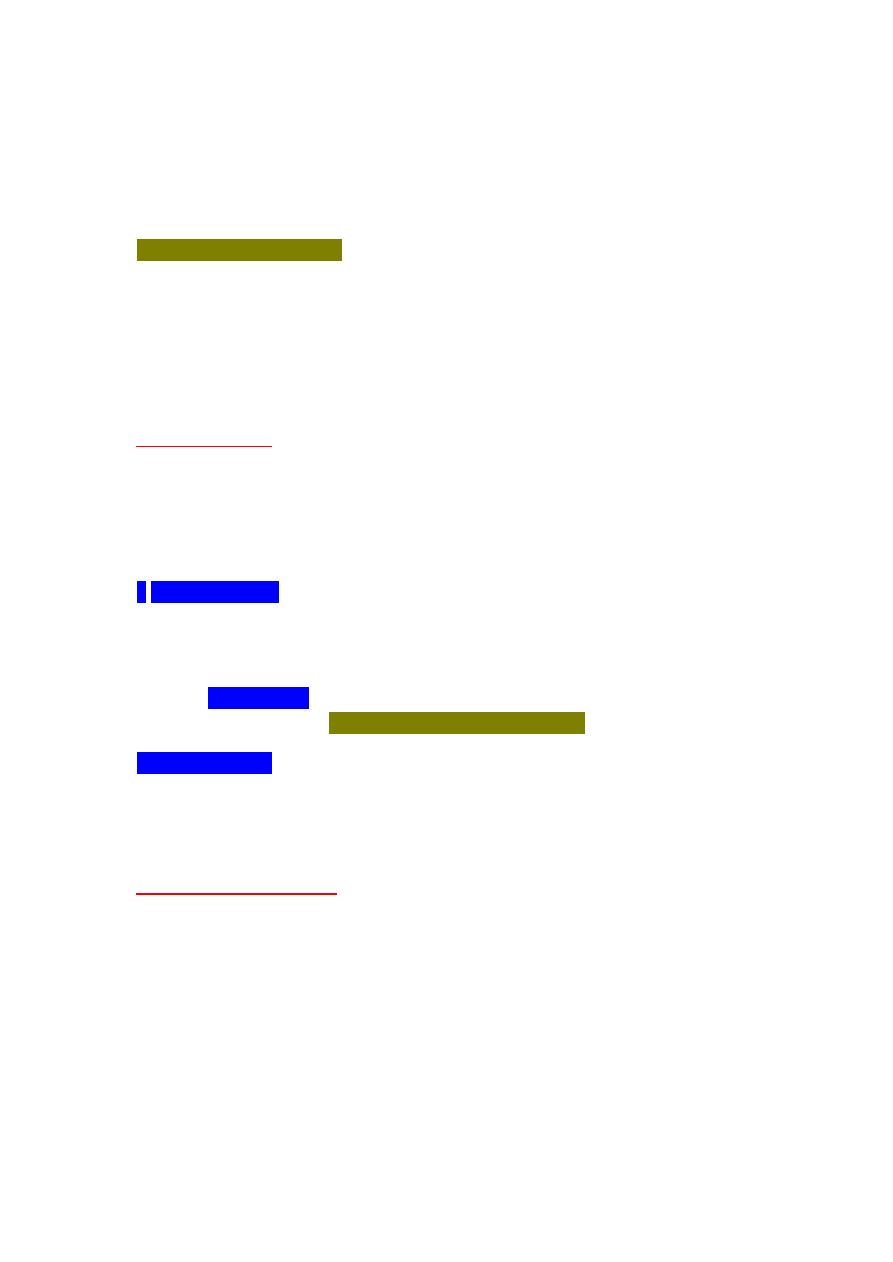
Dr. Methaq A.M.Hussein
MRCP(LONDON),,
SCE OF ENDOCRINE , D.M(LONDON)
FIBIMS, Assist Professor
LECT. 1,2
located superior and anterior to the
brain stem and inferior to the
.. The hypothalamus contains special
cells called neurosecretory cells—neurons that secrete hormones:
•
Thyrotropin-releasing hormone (TRH)
•
Growth hormone-releasing hormone (GHRH),,, Growth hormone-inhibiting
hormone (GHIH)….somatostatin
•
Gonadotropin-releasing hormone (GnRH)
•
Corticotropin-releasing hormone (CRH)
•
(Prolactin-inhibiting hormone
•
Oxytocin
•
Antidiuretic hormone (ADH)
The last two hormones—oxytocin and antidiuretic hormone—are produced by
the hypothalamus and transported to the posterior pituitary, where they are
stored and later released.
Pituitary Gland
The
, also known as the hypophysis, is a small pea-sized
lump of tissue connected to the inferior portion of the hypothalamus of the
brain. Many
surround the pituitary gland to carry the
hormones it releases throughout the body. Situated in a small depression in
the
called the sella turcica, the pituitary gland is actually
made of 2 completely separate structures: the posterior and anterior pituitary
glands.
1. Posterior Pituitary: The posterior pituitary gland is actually not glandular
tissue at all, but nervous tissue instead. The posterior pituitary is a small
extension of the hypothalamus through which the axons of some of the
neurosecretory cells of the hypothalamus extend. These neurosecretory cells
create 2 hormones in the hypothalamus that are stored and released by the
posterior pituitary:
•
Oxytocin triggers uterine contractions during childbirth and the release of
milk during breastfeeding.

•
Antidiuretic hormone (ADH) prevents water loss in the body by increasing
the re-uptake of water in the kidneys and reducing blood flow to sweat
glands.
2. Anterior Pituitary: The anterior pituitary gland is the true glandular part of
the pituitary gland. The function of the anterior pituitary gland is controlled
by the releasing and inhibiting hormones of the hypothalamus. The anterior
pituitary produces 6 important hormones:
•
Thyroid stimulating hormone (TSH), as its name suggests, is a tropic
hormone responsible for the stimulation of the thyroid gland.
•
Adrenocorticotropic hormone (ACTH) stimulates the adrenal cortex, the
outer part of the adrenal gland, to produce its hormones.
•
Follicle stimulating hormone (FSH) stimulates the follicle cells of the gonads
to produce gametes—ova in females and sperm in males.
•
Luteinizing hormone (LH) stimulates the gonads to produce the sex
hormones—estrogens in females and testosterone in males.
•
Human growth hormone (HGH) affects many target cells throughout the
body by stimulating their growth, repair, and reproduction.
•
Prolactin (PRL) has many effects on the body, chief of which is that it
stimulates the
of the breast to produce milk.
•
Type of staining of cells…..acidophile….basophile….nonstaining or
chromophobes
Pituitary Disorders
Hypopituitarism
Hypopituitarism is the inability of the pituitary gland to provide sufficient hormones,
due to an inability of the pituitary gland to produce hormones or due to an
insufficient supply of hypothalamic-releasing hormones
.
Symptoms depend on the degree of hormone depletion and the rapidity of onset.
Hypopituitarism is usually a mixture of several hormonal deficiencies but rarely
involves all the pituitary hormone
Causes
Pituitary tumours: for example, adenomas
.

Non-pituitary tumours: craniopharyngiomas, meningiomas, gliomas, chordomas,
ependymomas, metastases
.
Infiltrative processes: sarcoidosis, histiocytosis X, haemochromatosis
.
Infections: cerebral abscess, meningitis, encephalitis, tuberculosis, syphilis
.
Ischaemia and infarction: subarachnoid haemorrhage, ischaemic stroke,
Sheehan's
syndrome
(postpartum haemorrhage with anterior pituitary infarction), p
ituitary
apoplexy (
caused by an acute infarction of a pituitary adenoma).[
]
Empty sella syndrome:
radiological diagnosis of absence of normal pituitary within
the sella turcica. Usually benign and asymptomatic but may develop headaches and
hypopituitarism
.
Iatrogenic: irradiation,[ neurosurgery, withholding previous chronic glucocorticoid
replacement
.
Head injury (may have occurred up to several years before).[
]
Congenital:
Kallmann's syndrome
(congenital hypogonadotropic hypogonadism with
midline defects such as anosmia).[
]
Autoimmune:
lymphocytic hypophysitis.
[
]
Genetic causes - eg, PIT1, PROP1 gene mutations, septo-optic dysplasia
.
Presentation
Presentation varies from asymptomatic to acute pituitary failure with acute collapse
and coma, depending on the aetiology, rapidity of onset, and predominant
hormones involved
.
Initially, a patient with any hormone deficiency may be asymptomatic
.
May present with endocrine dysfunction
:
Adrenocorticotrophic hormone (ACTH) deficiency
1.
:
Chronic: fatigue, pallor, anorexia, weight loss
.
Acute: weakness, dizziness, nausea, vomiting, circulatory collapse, fever, shock
.
Children: delayed puberty, failure to thrive
.
Hypoglycaemia, hypotension, anaemia, lymphocytosis, eosinophilia, hyponatraemia
.

Thyroid-stimulating hormone (TSH) deficiency
:
2.
.
Tiredness, cold intolerance, constipation, hair loss, dry skin, hoarseness, cognitive
slowing
.
Weight gain, bradycardia, hypotension
.
Children: delayed development, growth restriction and intellectual impairment
.
Gonadotrophin deficiency
:
3.
Women: oligomenorrhoea, loss of libido, dyspareunia, infertility, osteoporosis
.
Men: loss of libido, impaired sexual function, mood impairment, loss of facial,
scrotal, and body hair; decreased muscle mass, osteoporosis, anaemia
.
Children: delayed puberty
.
Growth hormone deficiency
:
4.
Decreased muscle mass and strength, visceral obesity, fatigue, decreased quality of
life, impairment of attention and memory
.
Dyslipidaemia, premature atherosclerosis
.
.
5. Antidiuretic hormone deficiency
:
Polyuria, polydipsia
.
Decreased urine osmolality, hypernatraemia
.
May also present with features attributable to the underlying cause
:
Space-occupying lesion: headaches or visual field deficits
.
Large lesions involving the hypothalamus: polydipsia and inappropriate secretion of
antidiuretic hormone
May be hypopituitarism with mass effect but with
hyperprolactaemia……??????
Hypopituitary coma

Usually occurs in a patient known to have hypopituitarism and often develops
gradually but may occur suddenly due to pituitary apoplexy.
]
May be triggered by infection, trauma, surgery, hypothermia or pituitary
haemorrhage
.
meningism, visual field
include hormone deficiencies,
of apoplexy
Clinical features
defects, ophthalmoplegia, reduced consciousness, hypotension, hypothermia and
hypoglycaemia
.
Treatment is required urgently in the form of intravenous hydrocortisone. Thyroid
replacement (T3) should only be started once hydrocortisone therapy has been given.
Pituitary apoplexy requires urgent surgery
.
Investigations
.
Blood glucose, renal function and electrolytes (disturbances of renal function,
glucose and electrolytes are common
.)
Hormonal assays
:
.
1
TFTs, prolactin, gonadotrophins, testosterone, cortisol
.
Measurement of gonadotrophins, TSH, growth hormone, glucose and cortisol
-
releasing hormone (GnRH), thyrotropin
-
with gonadotrophin
stimulation
2.
following
induced hypoglycaemia
-
and insulin
releasing hormone (TRH)
.
should be performed to exclude tumours and other lesions of the
Cranial MRI scan
3.
sellar and parasellar region after hypopituitarism has been confirmed.
Management[
]
Acute resuscitation, including intravenous fluids, may be required
.)
If hypopituitarism has been caused by a tumour, pituitary function may be restored
after successful surgical or medical removal of the lesion
.
Medical care consists of hormone replacement as appropriate and treatment of the
underlying cause
.
Glucocorticoids are required if the ACTH-adrenal axis is impaired, especially in acute
presentations. Increased doses of glucocorticoids are required following any form of

emotional or physical stress (eg, during an infection) to prevent acute
decompensation
.
Secondary hypothyroidism: thyroid hormone replacement
.
Gonadotrophin deficiency: testosterone replacement; oestrogens, with or without
progesterone, for women (combined oral contraceptive pill for premenopausal u
Growth hormone replacement
.
Management of Diabetes Insipidus
.
Surgical
:
In pituitary apoplexy, prompt surgical decompression may be life-saving
.
Removal of macroadenomas that do not respond to medical therap
Note:the loss of hormons not similer to replacement of these
y
hormons???
